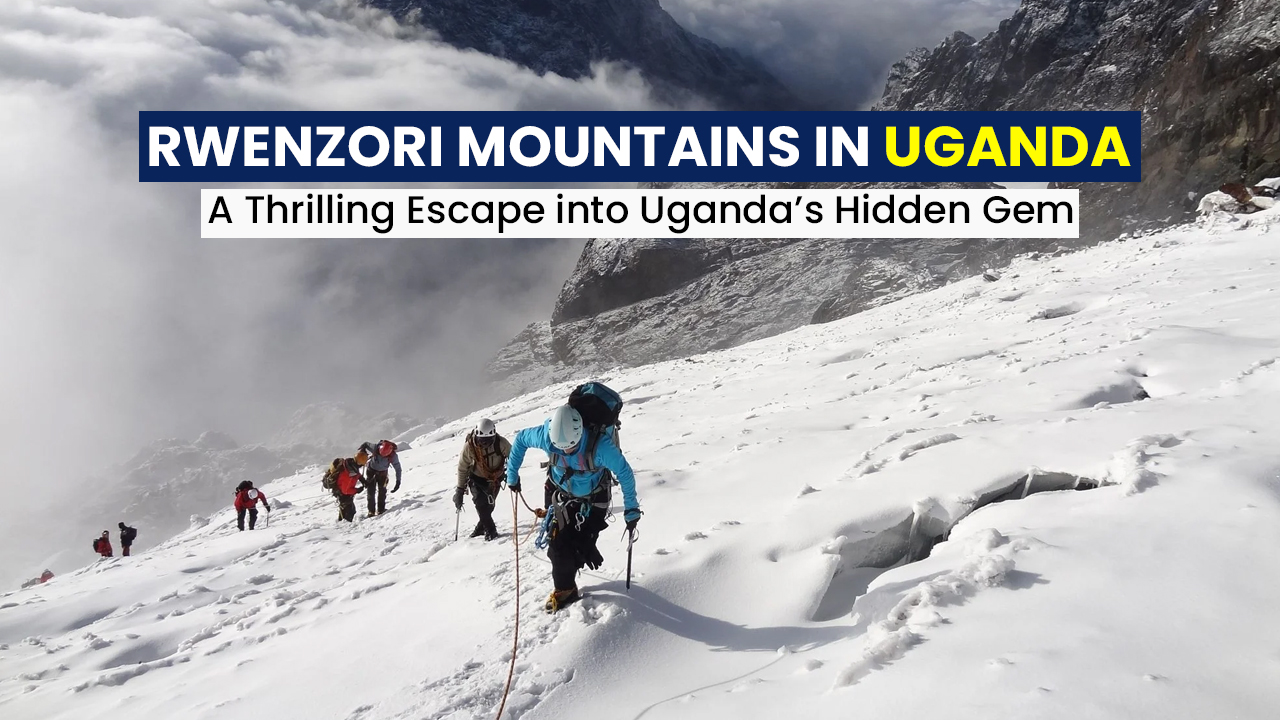
The Rwenzori Mountains, often called the “Mountains of the Moon,” are amongst Africa’s most breathtaking yet less-explored natural wonders. The majestic mountain is located on the border between Uganda and the Democratic Republic of the Congo and is home to some of the most breathtaking and diverse landscapes in Africa. The mountain range is 120 km long and 65 km wide, and with an increase in altitude, the magical landscape transforms into a botanical paradise. The landscape of the mountain ranges from lush montane forests and moorlands to equatorial snow-capped peaks. The Rwenzori Mountains National Park in southwestern Uganda became a UNESCO world heritage site in 1994.
Rwenzori Mountains – The Legendary “Mountains of the Moon”
The Rwenzori was termed as the “Mountains of the Moon,” by the Greek geographer Ptolemy in the 2nd century AD and was later explored in 1889 by European adventurer Henry Morton Stanley. The Rwenzori Mountains boast a dramatic landscape of rugged peaks, pristine glaciers, lush forests, and diverse wildlife offering an unparalleled experience to adventurers, nature lovers, and trekking enthusiasts. The highest peak of the mountains is Margherita Peak reaching an impressive 5,109 meters above sea level on Mount Stanley. It is Africa’s third-highest peak and the mountains were formed by tectonic activity in which huge rock blocks thrust upward from the Western Rift Valley floor. The name Rwenzori of the mountains is derived from the word “Rwe Nzururu,” which means “rainmaker.” The name is a perfect fit considering the frequent rainfall and mist-covered peaks of the mountains.
Biodiversity and Unique Ecosystems
The Rwenzori Mountains are a biodiversity hotspot, as this region is home to Africa’s most unique ecosystems, boasting a variety of plant, and animal species, and ecosystems including montane forests, moorlands, glacial peaks, and alpine meadows. While ascending this majestic mountain, tourists will get to encounter an amazing variety of flora and fauna comprising heather trees, giant lobelias, rare animal species such as Rwenzori Turaco, leopards, rare primates such as the L’Hoest’s monkey and three-horned chameleons. In addition to these, tourists, particularly birdwatchers will be treated with over 200 bird species and this ecological diversity of this mountain is a testament to Uganda’s natural beauty. While ascending the mountain tourists will pass through the following five distinct vegetation zones:
Tropical Rainforest (1,600–2,500m) – Tropical Rainforest is the lowest zone of the mountain having rich flora and fauna comprising over 200 bird species along with forest elephants, and colobus monkeys.
Bamboo Forest (2,500–3,000m) – The second lower zone is the dense Bamboo Forest that serves as a home for the elusive Rwenzori turaco, an iconic bird of the region.
Heather Zone (3,000–3,800m) – The next vegetation zone is the Heather Zone which is occupied by giant lobelias and heathers draped in moss. This zone is known for providing otherworldly experiences for trekkers.
Alpine Zone (3,800–4,500m) – The Alpine is the second topmost zone that features rockier terrain and is home to unique plants like the giant groundsel and provides panoramic views of the peaks.
Glacial Zone (above 4,500m) – Glacial is the highest zone of the mountain having snow-capped peaks and glaciers. This zone is a rare sight in equatorial Africa.
Best Time to Visit
The Rwenzori Mountains in Uganda can be best visited during the dry seasons, which are from June to August and from December to February. These months have perfect weather having clear skies and less rain and are considered ideal for climbing and trekking. Besides, even trails are accessible and have better visibility, allowing trekkers to experience the scenic beauty of the region.
Visit Rwenzori Mountains – A Landscape Like No Other
The Rwenzoris Mountains with their lower slopes sheltered in montane forests, bamboo woodlands, and vast moorlands emerge as a mystical wonderland. The landscape with the increase in altitude transforms into a botanical paradise featuring giant lobelias, tree heathers, and everlasting flowers, creating a magical feel among moss-draped rocks. Some of the compelling reasons to visit the mystical mountains include:
- Visit the “Mountains of the Moon”, which is a legendary and historic range
- It is Africa’s third-highest peak and a true mountaineering experience
- A globally significant conservation area and UNESCO World Heritage Site
- Unique flora and fauna with rare birds and animal species that are not found anywhere
- Tourists get to experience all levels of hiking from easy nature walks to summit climbs
Final Thoughts
The Rwenzori Mountains are Africa’s gem offering an unforgettable blend of adventure, natural beauty, and cultural heritage. Embarking on a journey to this mountain is an exploration of Uganda’s untouched beauty, wilderness, and awe-inspiring landscapes. Tourists whether an experienced mountaineer or a nature enthusiast looking for a unique trekking experience the Rwenzoris Mountains promise an unparalleled journey. Rwenzori Mountains are a must-visit destination for anyone exploring Uganda’s natural wonders due to its rich biodiversity, breathtaking scenery, and deep cultural significance.